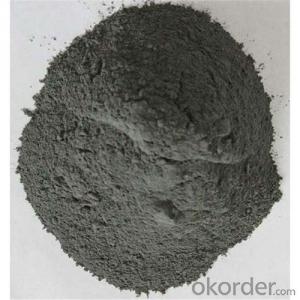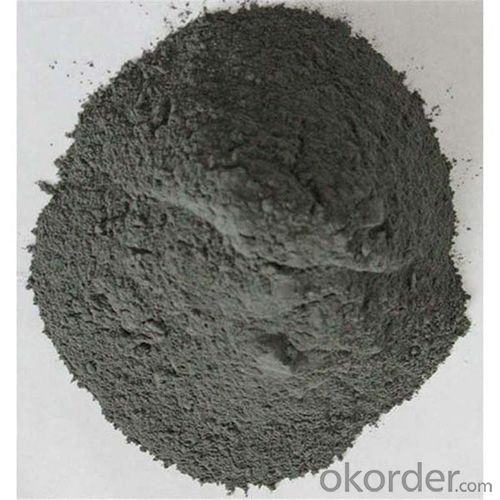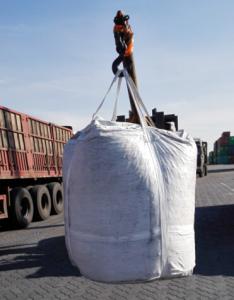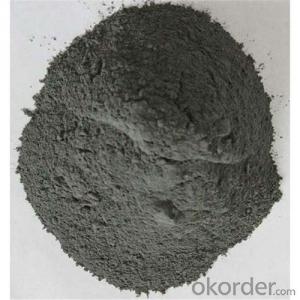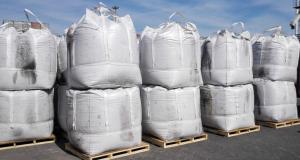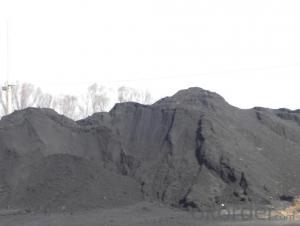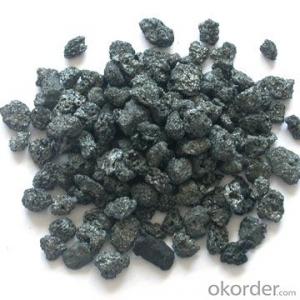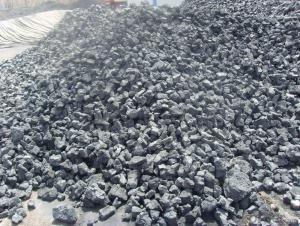Fuel Grade High FC Carbon Coke Hot Sale
- Loading Port:
- Tianjin
- Payment Terms:
- TT or LC
- Min Order Qty:
- 20 m.t.
- Supply Capability:
- 1500 m.t./month
OKorder Service Pledge
OKorder Financial Service
You Might Also Like
Quick Details
Place of Origin: China (Mainland)
Application: carben additives
Dimensions: fix carben morethan98%,sulphur less5%
Chemical Composition: nature graphite powder
attribute: briquette grade
shape: <SPAN style="BORDER-BOTTOM: 0px; BORDER-LEFT: 0px; PADDING-BOTTOM: 0px; MARGIN: 0px; PADDING-LEFT: 0px; PADDING-RIGHT: 0px; FONT-FAMILY: inherit; WORD-WRAP: break-word; VERTICAL-ALIGN: baseline; BORDER-TOP: 0px; BORDER-RIGHT: 0px; PADDING-TOP: 0px" class=attr-value title=block/powder>block/powder
classify: carbon additives/petroleum coke
Packaging & Delivery
| Packaging Details: | 50kg/bag,25kg/bag or as customer requirement |
|---|---|
| Delivery Detail: | 20DAYS after payment |
Specifications
Fuel Grade High FC Carbon Coke Hot Sale
Petroleum coke products can be divided into needle coke, sponge coke, projectile coke and coke breeze four kinds.
Calcined Petroleum Coke
F.C.: 98.5%MIN
ASH: 0.8% MAX
V.M.: 0.7%MAX
S:0.5%MAX
Moisture: 0.5%MAX
Structure
Fuel Grade High FC Carbon Coke Hot Sale
Shape: granule
- Dimensions: 0-1mm, 1-5mm, 1-6mm, 2-8mm, etc
- Product Type: Carbon Additive
- C Content (%): 98-99.5% MIN
- Working Temperature: -
- S Content (%): 0.5%-0.7%MAX
- Ash Content (%): 0.7%MAX
- Volatile:0.8%MAX
- Moisture: 0.5% MAX
- ADVANTAGE: low ash & sulfur
- COLOR: Black
Feature
Fuel Grade High FC Carbon Coke Hot Sale
Physics and chemistry performance:
Unit | Index | |||||
No.1 | No.2 | No.3 |
| |||
Density | g/cm3 | 2.04 | 2.00 | 2.00 | ||
sulphur content | %≤ | 0.5 | 1.0 | 2.5 | ||
volatility | %≤ | 0.5 | 0.5 | 0.5 | ||
ash content | %≤ | 0.5 | 0.5 | 0.5 | ||
moisture | %≤ | 0.3 | 0.5 | 0.5 | ||
charcoal | %≤ | 98.5 | 98.0 | 98.0 | ||
Image
Fuel Grade High FC Carbon Coke Hot Sale
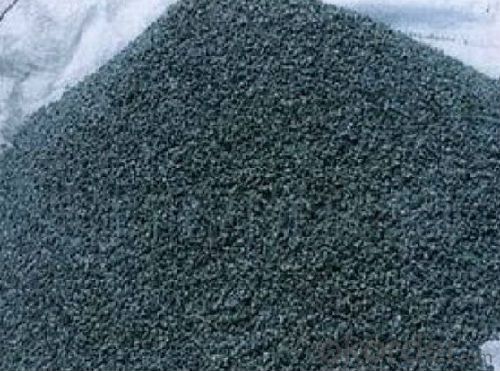
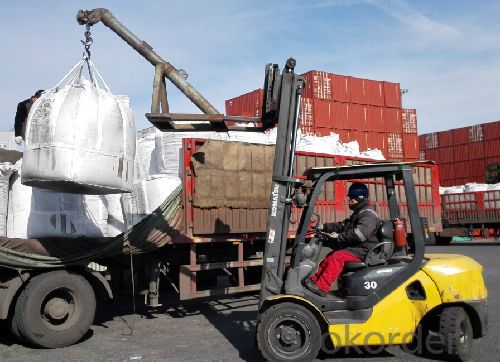
FAQ:
Fuel Grade High FC Carbon Coke Hot Sale
How to classify calcined petroleum coke?
1) According to difference of sulfur content, can be divided into high sulfur coke (sulfur content more than 4%), sulphur in coke sulfur content (2% 4%) and low sulfur coke (sulfur content below 2%).
2) Petroleum coke products can be divided into needle coke, sponge coke, projectile coke and coke breeze four kinds:
3) Needle coke, has obvious needle-like structure and fiber texture, mainly used for steel-making in high power and ultra-high power graphite electrode. As a result of needle coke in sulfur content, ash content, volatile matter and true density and so on have strict quality requirements, so the production process of needle coke and raw materials have special requirements.
4) The sponge coke, high chemical reactivity, low content of impurities, mainly used in the aluminum industry and carbon industry.
5) Focal or spherical coke: the projectile shape is round, diameter 0.6-30 mm, usually from the production of high sulphur, high asphaltic residual oil, can only be used as industrial fuel power generation, cement etc.
6) Coke breeze: fluidized coking process, the fine particles (0.1- 0.4 mm) in diameter, high volatile, high expansion coefficient, cannot be directly used for electrode preparation and carbon industry.
Advantage:
Fuel Grade High FC Carbon Coke Hot Sale
1. High quality and competitive price.
2. Timely delivery.
3. If any item you like. Please contact us.
Your sincere inquiries are typically answered within 24 hours.
- Q: What are carbon credits and how do they work?
- Carbon credits are a market-based approach to reducing greenhouse gas emissions. They work by assigning a value to the reduction or removal of one metric ton of carbon dioxide or its equivalent (CO2e) from the atmosphere. These credits represent the right to emit a specific amount of greenhouse gases and can be traded or sold on the carbon market. The concept behind carbon credits is to provide an incentive for companies, organizations, or individuals to reduce their emissions. By setting a price for carbon emissions, it encourages businesses to invest in cleaner technologies and practices to offset their carbon footprint. This leads to a reduction in overall greenhouse gas emissions, contributing to the global effort to combat climate change. To obtain carbon credits, organizations undertake projects that reduce or remove greenhouse gas emissions. These projects can include renewable energy installations, energy efficiency improvements, afforestation (planting trees), or investing in clean development mechanisms in developing countries. Each project is assessed and verified by an independent third party to ensure its legitimacy and the actual reduction in emissions. Once a project is approved and verified, it is assigned a specific number of carbon credits based on the amount of emissions it has reduced or removed. These credits can then be sold on the carbon market to companies or individuals looking to offset their own emissions. The buyers can use these credits to compensate for their own emissions, effectively canceling out their carbon footprint. The carbon market provides a mechanism for the buying and selling of carbon credits, allowing for a flexible and efficient way to address climate change. The price of carbon credits can vary depending on supply and demand dynamics, as well as the stringency of emission reduction targets set by governments or global agreements. Overall, carbon credits play a vital role in incentivizing emission reduction activities and promoting sustainable practices. They provide a financial mechanism for businesses to invest in cleaner technologies while contributing to the global effort to mitigate climate change.
- Q: What are the consequences of increased carbon emissions on urban areas?
- Increased carbon emissions have numerous consequences on urban areas. Firstly, it leads to a rise in air pollution, contributing to respiratory issues and increased health risks for the population. Additionally, carbon emissions contribute to the greenhouse effect, leading to higher temperatures and exacerbating the urban heat island effect, which can result in discomfort, heat-related illnesses, and increased energy demands for cooling. Moreover, increased carbon emissions contribute to climate change, leading to more frequent and intense extreme weather events like storms and heatwaves, which pose significant threats to urban infrastructure, public safety, and economic stability. Overall, the consequences of increased carbon emissions on urban areas are detrimental to both the environment and human well-being.
- Q: Often see the so-called 30T, 46T, 60T carbon fiber, 60T carbon fiber, equivalent to T hundreds of carbon fibers, is T800, or T1000? I'm not very good at parameter conversion. Is there a parameter list? How do I correspond to the T300T700T800 performance parameter table?
- Two, 46T, 60T refers to high modulus carbon fibers. M series; T1000 refers to the high strength carbon fiber, belonging to the T series; M series and T series belong to different performance products.
- Q: Where are carbon fiber sheets and carbon fiber sheets used?
- Carbon reinforced materials, carbon fiber cloth is mainly used for concrete beam flexural and shear strengthening, flexural reinforcement, column reinforcement plate; plant, buildings, schools, hospitals and other industrial and civil building reinforcement; Luqiao, water conservancy, nuclear power and energy infrastructure reinforcement.Carbon fiber board is mainly used for concrete structure plate and beam repairing and reinforcing plate; opening wall and surrounding reinforcement; the wooden building beam reinforcement; reinforced bridge, bridge pier, truss; tunnel, cable pipeline repairing and reinforcing.
- Q: How does carbon impact the prevalence of landslides?
- Carbon, in the form of carbon dioxide (CO2), plays a significant role in impacting the prevalence of landslides. One of the primary ways carbon impacts landslides is through its contribution to climate change. Increased levels of CO2 in the atmosphere result in global warming, which alters weather patterns, precipitation levels, and the overall stability of slopes and landforms. Climate change caused by carbon emissions leads to more frequent and intense rainfall events in many regions. This increased rainfall can saturate soil and increase groundwater levels, making slopes more susceptible to landslides. Additionally, intense rainfall can erode the soil, further weakening the stability of slopes and increasing the likelihood of landslides. Another way carbon impacts the prevalence of landslides is through its impact on vegetation. Carbon dioxide is a vital component of photosynthesis, the process by which plants convert sunlight into energy. However, elevated levels of CO2 can affect plant growth and productivity. Plants play a crucial role in stabilizing slopes and preventing erosion through their extensive root systems. When carbon levels are high, plants may experience reduced growth, which weakens their ability to anchor the soil and protect against landslides. Moreover, carbon emissions contribute to the melting of glaciers and permafrost, which can trigger landslides in mountainous regions. Glaciers act as natural stabilizers, holding large amounts of rock and soil in place. When glaciers melt due to global warming, the sudden release of this material can trigger landslides and result in devastating consequences. In summary, carbon impacts the prevalence of landslides primarily through its contribution to climate change and its subsequent effects on weather patterns, vegetation growth, and the stability of slopes. Addressing carbon emissions and mitigating climate change is essential in reducing the occurrence and severity of landslides.
- Q: How does carbon affect the quality of indoor air?
- The quality of indoor air can be significantly affected by carbon. Carbon dioxide (CO2) is a major contributor to carbon in indoor air and is produced when humans and animals respire. High levels of CO2 can cause discomfort, including drowsiness, headaches, and difficulty concentrating. Another carbon compound that can be found in indoor air is carbon monoxide (CO), which is mainly present due to incomplete combustion of fossil fuels in stoves, fireplaces, and furnaces. Carbon monoxide is extremely toxic and can be life-threatening if it reaches high concentrations. In addition to these direct sources of carbon, volatile organic compounds (VOCs) can also impact indoor air quality. VOCs like formaldehyde, benzene, and toluene are released from various sources such as building materials, furniture, cleaning products, and tobacco smoke. These VOCs can have harmful effects on health, including irritation of the eyes, nose, and throat, headaches, dizziness, and in some cases, long-term health risks such as cancer. To maintain good indoor air quality, it is crucial to monitor and control the levels of carbon compounds in the air. Adequate ventilation is essential to ensure fresh air circulation and reduce the concentration of CO2 and other pollutants. Regular maintenance and inspection of appliances that burn fuel can prevent the accumulation of carbon monoxide. Choosing low-VOC or VOC-free materials and products, as well as refraining from smoking indoors, can help minimize the emission of harmful carbon compounds.
- Q: How does carbon dioxide affect textile production?
- Textile production can be significantly impacted by carbon dioxide in various ways. Firstly, the manufacturing process of textiles generates carbon dioxide, which contributes to overall greenhouse gas emissions and worsens climate change. This, in turn, can result in long-term consequences like extreme weather events, rising temperatures, and sea-level rise. These outcomes can disrupt the supply chain and production of textiles. Furthermore, carbon dioxide emissions from textile production contribute to air pollution, which can adversely affect human health. Workers exposed to high levels of carbon dioxide may experience respiratory problems and other respiratory diseases as a result of the release of this greenhouse gas. Moreover, carbon dioxide is commonly used in the dyeing and finishing process of textile production. However, this practice can have detrimental effects on the environment. When carbon dioxide is released into water bodies during the dyeing process, it can contribute to water pollution, contaminating water sources and harming aquatic life. Additionally, excessive use of carbon dioxide in textile production can have economic implications. Since carbon dioxide is a byproduct of burning fossil fuels, its production is inherently tied to the consumption of non-renewable resources. The reliance on fossil fuels makes textile production vulnerable to price fluctuations, as the cost of carbon dioxide emissions and energy production can vary significantly. To mitigate the negative impacts of carbon dioxide on textile production, several measures can be implemented. These include adopting cleaner production techniques and technologies that reduce carbon dioxide emissions, such as utilizing renewable energy sources or implementing carbon capture and storage systems. Furthermore, investing in sustainable and environmentally-friendly materials, like organic cotton or recycled fibers, can help reduce the carbon footprint of textile production. Overall, reducing carbon dioxide emissions in textile production is crucial for the industry to become more sustainable and mitigate its environmental and health impacts.
- Q: What does carbon cloth tonnage mean?
- Carbon cloth tonnage is illegal: mean a square centimeter of sectional area of carbon cloth tension of tonnage. Meaning that the carbon cloth rolled into a solid "rod" if the cross-sectional area of the bar is 1 cm, the maximum tension tonnage it bear -- carbon cloth tonnage.
- Q: Helmet material: ABS composites, FRP, carbon fiber, what are the differences? How to tell good from bad?
- ABS resin is one of the five major synthetic resin, impact resistance, heat resistance, low temperature resistance, chemical resistance and excellent electrical properties, but also has the characteristics of easy processing, product size stability, good surface gloss, easy coloring, painting, but also the surface plating metal, electroplating, welding, hot pressing and bonding the two processing, widely used in the industrial field of mechanical and automotive electrical and electronic instruments, textiles and construction, is a very widely used thermoplastic engineering plastics.Materials (Composite) is a material consisting of two or more than two different materials which, in physical or chemical ways, macroscopically form new properties. Various materials in the performance complement each other, and produce synergistic effect, so that the comprehensive performance of composite material is better than the original material, and meet a variety of different requirements. The matrix materials of composite materials are divided into two major categories: metal and nonmetal. Metal matrix commonly used aluminum, magnesium, copper, titanium and its alloys. The non-metallic matrix mainly includes synthetic resin, rubber, ceramic, graphite, carbon and so on.
- Q: How does carbon dioxide affect the acidity of rainwater?
- The presence of carbon dioxide in rainwater has an impact on its acidity due to its contribution to the creation of carbonic acid. When carbon dioxide dissolves in rainwater, it engages in a reaction with water molecules, resulting in the formation of carbonic acid. This reaction causes an elevation in the concentration of hydrogen ions (H+) within the water, ultimately leading to a decrease in pH and the production of acidic rainwater. Although the carbonic acid generated from carbon dioxide is classified as a weak acid, it still possesses the ability to reduce the pH level of rainwater, rendering it more acidic than usual. This heightened acidity can result in harmful consequences for the environment, such as the destruction of plant and animal life, the corrosion of buildings and infrastructure, and the disruption of aquatic ecosystems.
Send your message to us
Fuel Grade High FC Carbon Coke Hot Sale
- Loading Port:
- Tianjin
- Payment Terms:
- TT or LC
- Min Order Qty:
- 20 m.t.
- Supply Capability:
- 1500 m.t./month
OKorder Service Pledge
OKorder Financial Service
Similar products
Hot products
Hot Searches
Related keywords
